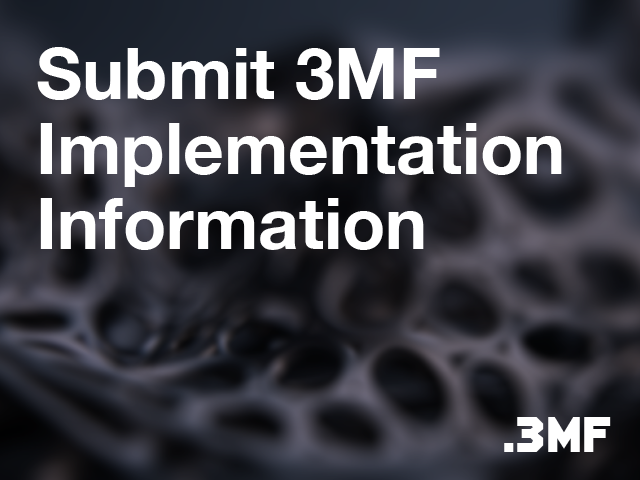
3MF Adoption: Over 100 Software Applications Now Support the Format
The 3D Manufacturing Format (3MF) has become the go-to standard for additive manufacturing, now supported by more than 100 software applications across the industry. This milestone highlights the 3MF Consortium’s efforts in providing a standardized, full-fidelity file format that simplifies workflows from design through to production. Whether it’s used for simple mesh import/export or to handle the full spectrum of build preparation and tracking, 3MF’s adoption is proving critical for organizations of all sizes.
To see the comprehensive list of over 100 software applications that support 3MF, from entry-level tools to industrial-grade platforms, visit the 3MF Compatibility Matrix. This resource provides an up-to-date overview of the growing ecosystem of software and hardware utilizing the 3MF format, ensuring that your workflow can take full advantage of the format’s capabilities.
Adoption Across the Ecosystem
A diverse range of applications now utilize 3MF, from popular desktop 3D printing tools to industrial-scale additive manufacturing platforms. Software like Ultimaker’s Cura, Bambu Studio from Bambu Labs, and Prusa’s Slic3r all employ 3MF to streamline file preparation for desktop printers, providing users with precise, watertight models.
On the industrial side, companies like HP and Desktop Metal leverage 3MF for every aspect of build preparation and tracking, ensuring a scalable, repeatable workflow for their high-end machines. This includes everything from material definitions to machine-specific instructions, encapsulated within the 3MF format. HP’s Jet Fusion series and Desktop Metal’s Fabricate platform are just two examples of companies taking full advantage of the specification.

A Standard Driven by Industry Leaders
The development and evolution of 3MF is overseen by the 3MF Consortium’s steering committee, composed of representatives from key players across the additive manufacturing and software development spaces. This collaboration has resulted in a robust and adaptable format that continues to grow and evolve in response to industry needs. The Consortium’s commitment to openness and innovation has been instrumental in driving widespread adoption of the 3MF format.
What’s Next: Volumetric Extension for Voxel and Implicit Representation
Looking forward, the next major update to the 3MF specification is the public release of the Volumetric Extension. This extension will enable support for voxel-based models and implicit representations, such as Signed Distance Functions (SDF). These capabilities will allow for more complex geometries and finer control over material properties at the micro-scale, expanding 3MF’s utility in high-precision applications like medical devices and aerospace components.

Two Calls to Action:
Is Anything Missing?
As we continue to evolve the 3MF format, we welcome feedback from the community. If there are any features or capabilities you’d like to see in future iterations, please fill out this form to let us know. Your input helps us shape the future of additive manufacturing.
Developers: Integrate 3MF Into Your Workflow
Software developers and engineers interested in adopting the 3MF format can access the full specification on our 3MF GitHub repository. Whether you are building desktop applications or industrial-grade solutions, 3MF provides a comprehensive framework to manage additive manufacturing workflows efficiently.
